Resources
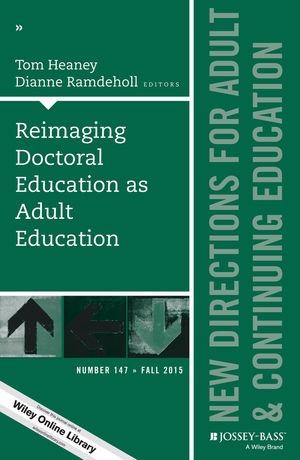
This book answers the question “Why not?” to Robert Smith’s (professor of adult education in the doctoral program at Northern Illinois University) statement, “Higher education is not adult education” (1). There are nine chapters by contributors who place importance on adult education as a collaborative methodology within a doctoral program. Each contributor reflects on their own principles and practices for reimagining doctoral study for adult educators, faculty, and administrators within higher education. Many of the contributors give real life experiences either as faculty or students of a doctoral program at National Louis University. Tom Heaney (Chapter 1) shares how the cohort-based program provides a space for doctoral students to critically reflect as a group, take control of their own learning, and assume ownership of the curriculum for which they can negotiate with faculty. He views democracy within a doctoral program as “unleashing the power of we” which allows the students see themselves as agents of change through the collective voice of intellectual discourse. Building a democratic forum is not an easy task, but it requires trust, discipline, and confidence among doctoral students and faculty (11). Stephen Brookfield (Chapter 2) notes that there are four lenses through which practitioners within education view their thinking and actions: student’s eyes, colleagues’ perceptions, theory, and autobiographical experiences. He emphasizes that professors and instructors need to get into the habit of stating out loud the reasons why they are doing what they do: readings, participation in class, order of curriculum, and the evaluative process (17-18). Nadira K. Charaniya and Jane West Walsh (Chapter 5) reflect on their experience as doctoral students and how collaborative learning partnerships were central to their peer relationships. They recall five outcomes: (1) deep trust and respect, (2) the conscious selection of one another as learning partners, (3) mutual striving toward common goals, (4) different but complementary personality traits, and (5) the development of synergy (49). They include a detailed case of their own journey as collaborative research partners where they created the Collaborative Inquiry Metaphor Creation and Analysis Method (CIMCAM) which involves the use of metaphor analysis as a research analysis. They share through a graphic representation the five steps to their research methodology (53) as well as focused group dialogue of the visual metaphor process. The outcome is the shift of power between research facilitators and participants as a means of collaborative co-construction of knowledge (56). The volume is an easy read. Each chapter could provide insight for doctoral programs in any discipline. It could also be a useful resource within a school of theology even though the focus of the book is a doctoral program at a private non-profit higher education institution. The authors explore the question of why it is important to reimagine doctoral education as adult education. In the introduction the editor claims, “An obvious goal of adult learners is to find their own voice, to be heard in rational discourse with their peers, and to gain control over the day-to-day decisions that affect their lives” (5). The book underscores the point that collaborative learning within a doctoral program is central to adult education.
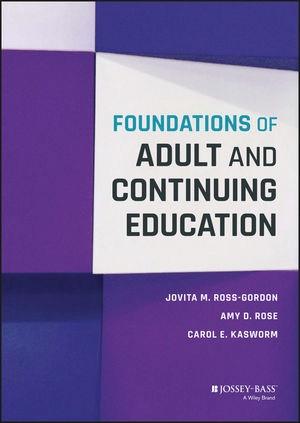
Foundations of Adult and Continuing Education lays a foundation of the history, theory, research, policy, and practice of the amorphous expanse known in North America as adult and continuing education. Undoubtedly constructed as a resource for graduate students in the burgeoning field, this text lucidly summarizes complex and daunting theory without stripping the data of interest and nuance. That is high praise for what could have easily been just another bulky textbook. Constructed of twelve chapters, divided into three sections, this work defines contemporary perspectives of the field, examines the foundations of the field, and focuses on the contexts of adult and continuing education (ix). The text gives a cursory summary of the historical rivalry between terms vying for lexical dominance of the then nascent field and while “there is still not a universally accepted definition today” one can trace certain themes and trends among the most noted definitions (3). The text presents different forms, purposes, and providers of adult education and even addresses the social forces affecting the expansion of the field (technological innovation, globalization and the global market, as well as seismic demographic shifts associated with rising levels of educational attainment, aging populations, and an increase in racial and ethnic diversity) (11-20). It outlines the prevailing historical patterns in adult participation and addresses some of the challenges that adult learners face, such as long waiting lists for ESL programs, limited formal educational background (especially among seniors [42-43]), the often-ignored relationship between social class and participation, as well as the influence race and ethnicity have on participation rates within adult education programs. Perhaps the most harrowing statistics are those involving unemployed and underemployed adults and the working poor. Foundations references the US Census of 2012 when reporting that 10.6 million Americans are among the working poor (59). According to this research, “women are twice as likely as men to be part of the working poor” and Hispanics and Blacks are “twice as likely as Whites and Asians to be among the working poor” (59). Educational attainment and working poor status appear to be linked as the U.S. Bureau of Labor Statics in 2012 reported that while only 2.1 percent of college graduates were categorized as working poor, “21.2 percent of those who had less than a high school diploma” (60) were categorized as such. Another startling revelation is related to the identity of adult educators. Identifying the boundaries of adult and continuing education (ACE) as a field is complex and requires educators to define not just education but also adulthood (“a relatively new social construct in American society” explored in greater depth in chapter 7), and to work in a field awash in acronyms and associations. They must try to construct a sense of professional identity in a field which necessarily works within structures of power and simultaneously challenges those structures (108, 117). Readers might be surprised by the inclusion of a chapter on philosophy in a text summarizing the history and vital components of what is commonly described as a predominately applied field. However, the inclusion of such is quite necessary considering that it is paramount to investigate “many ways of thinking” and the frameworks we use “for thinking about broader issues and social problems” (137). In fact, the authors describe philosophy in those exact terms. Coming from a religious studies background and being something of a theory-head, I found this chapter particularly engaging. It touches on everything from belief to Postmodernism and Critical Race Theory (CRT) and brilliantly illustrates the implications of such theory for the practice of education in general. The chapter, “Historical Perspective: Contexts and Contours,” is equally compelling because of its willingness to question the value of history for the field and investigate this history via its diffusion, “the spreading of ideas through newspapers, lectures, and academic and popular writing” (177). American history is intimately tied up with education and literacy: literacy and education took center stage during era of Reconstruction, illiteracy was viewed as a hindrance to the effort of the World Wars, and today, education and assimilation are still closely linked (191-192). Learning about the limited role the federal government is allowed, constitutionally, to play in the realm of adult education (as explicated in chapter 8) is eye-opening. The few times the federal government has stepped into the realm of adult education has had to do with immediate national interest (adult literacy, English language learning, literacy for military, and even job training for women working in production to strengthen the war effort of WW II) (264-267). The chapter “Technology and Adult Learning” could be a separate book itself. The protean nature of new technologies, the effect of technology on neural cognitive activities, and the dire need to develop “critical evaluative skills” in adults as well as in children in the age of the Internet are expertly addressed here (314). The two chapters dedicated to the expansive landscape of adult education map the varied spaces and contexts in which adult education takes place. While one chapter focuses on adult education within more formal contexts (within work, where adult education overlaps with the territory of higher education, inside programs of basic education and ESL learning, and military efforts), the other traces the outline of adult education as it occurs within a community context (faith-based programs, adult learning within museums and libraries, wellness programs, and civic engagement groups – especially those rooted in social justice). These two chapters spotlight just how diverse in topic, motivation, and method adult education can be. For newcomers to adult education like myself, the crisp explication of the regions and modes of what constitutes the field is exceptionally enlightening, as I have previously found it difficult to isolate what in fact constitutes, and does not constitute, adult education. While noticeably constructed with Education graduate students in mind, this book has something to teach anyone even tangentially interested in lifelong learning, community building, education, employment, and the effects of technology on North American culture. As an academic advisor working within the halls of higher education and a lifelong learner myself, I see this text as a great resource for graduate students and educators in all disciplines but I also recommend it to those invested in education and learning outside the confines of formal educational structures (church leaders, community organizers, volunteers, and policy advocates).
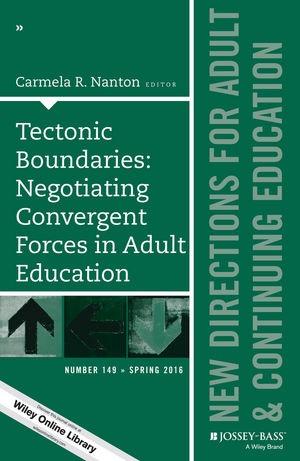
This slender volume presents a collection of essays examining concerns for adult education. The first chapter frames the problem with the concept of “liquid modernity,” which is the idea that structures such as family, occupation and career, and social life are fluid in an unprecedented way (12). Education and informal learning serve learners if they teach them how to navigate complex contexts and to recognize and adapt to changing circumstances. The metaphor of “tectonics” is used to describe forces which are sometimes convergent, divergent, and/or transformative in adult learner’s lives (93). This metaphor underscores the paradox that for adult learners, education needs to complement the structures of their lives while at the same time responding to the modern world’s shifting demands. Other chapters explore various contexts of adult learning. Chapter Two discusses the concerns of adults learning English as a second language. As immigrants, these learners are in transition, adjusting to new circumstances and a new culture. In order to make their education meaningful and engage them in learning, the authors describe strategies of using prompts to get students speaking and writing about their lives and their experiences to practice English, to engage students, and make their education meaningful (25). Chapter Three describes the growth of job clubs among communities of African-American women. These clubs are often attached to other institutional social networks in their lives, such as faith-based communities. These networks facilitate informal learning by providing tips and resources for members to update their skills. Chapter Four addresses education for the dissemination of health information, describing interrelated cultural, social, and economic factors that impinge on health education and which in turn impact health care outcomes. Chapter Five takes the digital native versus digital immigrant divide to examine intergenerational differences in approaching education. The challenge for educators is to design educational content which engages natives yet is also friendly and inviting for immigrants, and to shift the mode of adult education from thinking about teaching to thinking about learning. Chapter Six describes the significance of the ancient art of storytelling, not just to preserve culture, but to evoke and shape the meaning of life experiences for adult learners. Chapter Seven begins with the context of a post-recession economy in which low-skilled workers are increasingly vulnerable. This context provides the foundation for a discussion of the role of adult education: to build human capital, to make better citizens, and to enrich the course of learner lives. Chapter Eight outlines problems of delivery, credit, and accreditation that result from the tectonic shifts of the modern digital age. These shifts include such varied educational modes and attainments as badges, MOOCs, and "direct assessment competency-based programs" (87). The book’s strength rests in its ability to point to the concerns that frame contemporary adult education, although it does not describe pedagogical strategies in an equally consistent fashion. The book ends with the important reminder that in adult education, negotiation is key. Adaptability and flexibility complement the issue of fluidity. Good pedagogy meets learners where they are and recognizes their needs and concerns.
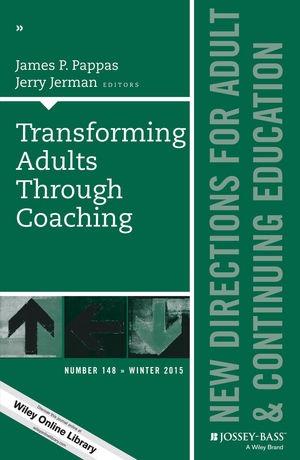
Transforming Adults Through Coaching (New Directions for Adult and Continuing Education, Number 148)
Coaching has grown exponentially as a professional practice and as a discipline in recent years. According to the International Coach Federation (ICF), the number of coaches worldwide increased from some 30,000 in 2008 to 47,000 in 2012. Coaches assist individuals with a variety of vocational and personal issues in both public and private sector organizations. As a result, many clients have become better prepared to reach their workplace and life goals. The field of adult coaching as a discipline has matured considerably alongside the practice itself. For example, studies of best coaching practices and analysis of coaching models abound. Professional organizations have formed and have begun to address such critical issues as training, certification, and ethical standards. Transforming Adults Through Coaching, edited by Pappas and Jerman, provides an introduction to the history, current practices, and possible future of coaching. Each chapter in this compact overview includes material that will benefit scholars, practitioners, and their clients. In particular, there is a solid review of adult development and learning theory with illustrative case studies and pertinent bibliographies. Pappas and Jerman acknowledge in their introduction that clarity is needed when considering what coaching is and is not. It is, they say, neither psychotherapy nor advice giving. Coaching is relational. It is ordinarily practiced with individuals and not groups. And, they underscore, the coaching relationship typically proceeds with a combination of questions and attentive listening. The results, they contend, can be transformative for clients. The first three chapters sketch the parameters for the field of adult coaching. The initial essay by Rachel Ciporen is “The Emerging Field of Executive and Organizational Coaching: An Overview.” Ciporen provides the reader with essential definitions and perspectives on coaching as well as a valuable list of resources for further study. She also notes some of the most common critiques of coaching, such as a frequent reliance on an “overly simplistic view of the learning and change process” (12). Carolyn Coughlin explores a major goal of adult coaching in “Development Coaching to Support the Transition to Self-Authorship.” Her essay describes how coaches, using their knowledge of adult development – especially body and mind theory and practice – can facilitate their client’s movement toward self-authorship. Adult learning theory provides a vital foundation for coaching. Elaine Cox’s contribution, “Coaching and Adult Learning: Theory and Practice,” identifies links between andragogy and transformative learning and how each connects with the practice of coaching. In addition, Cox addresses practical applications of these theories. Brief illustrative dialogues are included to show how the theories can impact actual adult coaching. “Coaching as a Strategy for Helping Adults” by Dorothy M. Wax and Judith Westheim focuses on the kind of issues adult learners bring to the learning environment and how coaching strategies can help them deal with professional and personal obstacles to success. Pappas and Jerman’s closing essay, “The Future of Coaching among Adult Populations,” outlines major directions and critical issues that lie ahead for the field. They underscore not only continued growth for coaching, but also the need for further refinements, including more specialization. These are some of the essays that make this brief collection valuable, not only for coaches and their clients, but for a range of helping professionals and researchers.
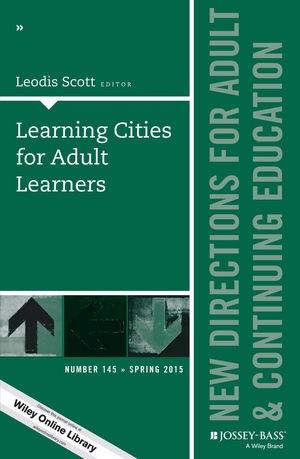
In Learning Cities for Adult Learners, Leodis Scott compiles seven articles that explore how cities are uniquely positioned to provide new directions for adult and continuing education. “Adult education needs more space,” Scott writes, and scholars and practitioners must take the lead in building larger spaces for all learners (1). The larger spaces are cities themselves – “learning cities” that take education beyond the traditional walls of schools, colleges, and workplaces in order to connect and grow in all life experiences. Scott suggests cities can take on the characteristics of learning, and in doing so, adults of every social class and educational level can experience a new quality of life. Scott is cofounder and research scholar at LearnLong Institute for Education and Learning Research, and lecturer in adult learning philosophy and practice at DePaul University–School for New Learning and Columbia University–Teachers College. Contributors to the volume come from a variety of universities, research centers, and programs that are committed to connecting the scholarship of adult learning with concrete practices that encourage a more widespread approach to learning. Most articles are co-authored, further demonstrating how collaboration and cross-disciplinary thinking is a natural hallmark of building the necessary infrastructure for learning cities. After an Editor’s Note by Scott, Connie Watson and Aimee Tiu Wu introduce key themes of lifelong learning and lifelong education in Chapter 1, as they explore the evolution and reconstruction of learning cities for sustainable actions. In Chapter 2, Hiram E. Fitzgerald and Renee Zientek write about the connections between learning cities, systems change, and community engagement scholarship in the context of a learning city/region. Lyle Yorks and Jody Barto investigate in Chapter 3 the interconnections between workplace, organizational, and societal learning, showing how 21st-century cities must function to promote learning for a larger society. In Chapter 4, Alysia Peich and Cynthia Needles Fletcher provide research and a case study for how public libraries and cooperative extension can work as community partners for lifelong learning and learning cities. In Chapter 5, Joanne Howard, Diane Howard, and Ebbin Dotson provide a connected history of health and education and demonstrate the necessity of including both health and education endeavors in any strategic planning of learning cities. Dan K. Hibbler and Leodis Scott write in Chapter 6 about the role of leisure in humanizing learning cities. Finally, Scott provides a summary in Chapter 7 of the main themes from the book and suggests a way forward: scholars and practitioners in the field of adult and continuing education can become facilitators of learning cities so that citizens have the power and ability to construct their own cities appropriate to their needs. This book is written for scholars and practitioners in adult learning and provides both a compelling vision and practical strategies for how citizens can work across fields and disciplines for the betterment of society. It will take leadership, vision, and talent to connect civic institutions in the formation of learning cities. One strategic type of institution not mentioned in the book is local religious communities. It seems that religious groups could be uniquely situated to both model and help facilitate the essential elements of a learning city. As scholars and practitioners continue to work towards this new direction for adult and continuing education, they will certainly do well to collaborate with as many different types of civic institutions as possible – for building a learning city is certainly worth the pursuit.
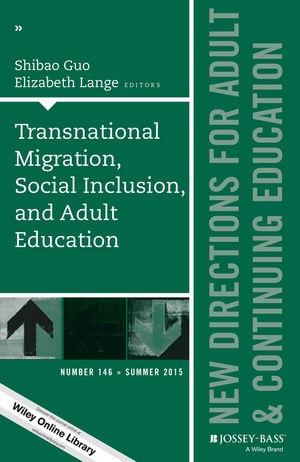
Adult education is an area of study and application that has helped bridge the gap between immigrant populations and the bureaucratic systems regulating said populations. This has been accomplished by implementing formal and informal training as well as collaborating with settlement services and other programs. Sadly, the bent of much of this training (specifically within Canada, the U.S., and Australia, in which this volume’s featured studies are located), was geared historically toward assimilating immigrants rather than integrating them into their host countries. Even today, the underlying narrative of immigration policy in these countries is highly colonial and assimilationist. This volume attempts to elucidate the key conflicts at work between immigrants, host countries’ policies, and service workers. Using Nancy Fraser’s theoretical constructs of redistributive, recognitive, and representational justice, the authors present solutions and insights into how adult education as a field can assist immigrants in challenging exploitation and influence policy towards a more socially just outcome. Applying Fraser’s theory to adult education, Shibao Guo defines recognitive adult education as one that “affirms cultural difference and diversity as positive and desireable assets” (15). This collection addresses the conflicting interests at work within immigration and education and points to possible ways adult educators and others can mitigate the negative realities that immigrants face. The topic of immigration is dense and multifaceted so thankfully the chapters are concise and accessible. Given that “the United Nations now estimates that 232 million of the world’s population lives outside the country of their birth,” transnational migration can no longer be ignored (2). One takeaway from this collection of nine chapters is that there is a marked disconnect between immigrants’ experiences and the policies created to regulate them. Immigrants face a myriad of challenges: the devaluation of foreign credentials, possible exploitation, racism, discrimination, heightened security policies of receiving countries, and broken bureaucratic systems. The nature of immigration has also changed. Shibao Guo provides a helpful description of how transnational migration is different from other types of migration by defining it as “multiple and circular migration across spaces of migrants who maintain close contact with their countries of origin” (7). This type of migration is a far cry from migration patterns of the nineteenth and twentieth centuries when migration was often described as “one way” and immigrants were expected to completely assimilate into the receiving country’s culture, leaving all traces of “foreignness” behind. Each of the chapters echo Shibao Guo’s call for adult education to “continue its long-standing commitment to social inclusion by working toward a more inclusive adult education squarely focused on the benefit of marginalized adult learners (e.g., workers, farmers, women, racialized minorities)” (8). The statistics reported are simply staggering. Bonnie L. Slade cites the Longitudinal Survey of Immigrants to Canada (LSIC), which reports that “although 76% of new immigrants have at least one type of international credential, such as a university degree, 70% experienced barriers in gaining access to the Canadian labor market at an appropriate level” (67). As Slade and others note, the devaluation of foreign creditials often leads to underemployment or unemployment, especially for immigrant women. Critically studying the language used in immigration policy and the theoretical position taken by policy makers may also assist adult educators in unpacking some of the undercurrents of racism and colonialism still at work in policy creation. As Edward Joaquin and Juanita Johnson-Bailey point out, the “issue of immigration has generally been cloaked in the language of patriotism and nationalism” (79). While overt racism and bias may be shunned in modern discourses around immigration “predjuice has become coded and wrapped in new, less offensive language and discussion” (80). Joaquin and Johnson-Bailey also suggest that adult education programs “adapt their curriculum to educate learners about transmigrational immigrant education concerns” as well as “infuse strategies that address the needs of immigrant students” (83). Yan Gao’s chapter on ESL programs in Canada illustates how some language programs have become mechanisms to create and control workers. Yan Gao suggests that adult educators in Canada “help immigrants develop critical language awareness” which will allow them to contest unfair practices (48). Perhaps one of the most promising avenues for change comes from Tara Gibb who suggests “inviting policymakers and employers into literacy classrooms and language classrooms so that they might observe firsthand alternative forms of assessment, view holistic respresentations of language and literacy practices, and listen to immigrants’ experiences and expressions of knowledge” (60). In these instances, adult educators are being called on to actively educate themselves, their students – immigrant and nonimmigrant alike – and policy makers on these issues. This collection provides an intriguing foray into the brave new world of immigration. It lends itself not only to adult educators who work with immigrants but also to those who do not. College faculty, administrators, and staff in the Global North would benefit from reading this volume because if transnational migration continues on its current trajectory, it will vastly change our institutional as well as national demographics.

David Greene’s Unfit to Be a Slave sets out to address the role that education should play in society. His argument rests on the assumption that current educational opportunities are limiting or exploitive of adult working students. He says, “today, the corporations and financiers benefit from the ignorance and silence of the population. The less information and understanding people have, the more they can be misled and controlled” (71; this criticism is borne out in more detail in chapters 4 and 5). The current trend towards “job skills education” is elicited as a prime example of inadequate higher educational opportunities which serve the interests of corporations and not students. Greene argues that “the duty of an educator is to broaden the horizons of learning and challenge the limitations they [students] face” (53). Thus, for Greene, successful education arrives at the “maximal development of intellect, understanding, culture, and awareness of the world around us” (9). Further, effective education must aim to develop students as leaders, and empower them for success, rather than giving them only skills requisite for low-wage or menial employment. In an effort to ameliorate these problems, Greene presents an outline of a pedagogical system built on Paulo Freire’s idea of “problem posing education.” This model starts with the dissolution of customary boundaries between teacher and student, recognizing that both students and teachers need to learn, and both can teach. Greene builds on this model, advocating that education ought to be focused on the collective development of a set of central literacies: functional literacy, civic or political literacy, health literacy, environmental literacy, and financial and economic literacy (22). Each of these literacies includes competencies for both individual and corporate ends, and Greene’s argument posits they can be gained through what he calls “central tools,” which are: listening, the recognition of pre-existing student knowledge, discussions about real problems faced in daily life, and the advocation and organization of specific actions to combat those problems (71-77). Greene also strongly suggests that education not be confined to the classroom. He contends that higher education must empower students to change society and he provides examples from his own teaching that underscore this need. Unfit to Be a Slave does not contain any quick fix techniques to import into your classroom to move towards a more effective classroom experience, rather it presents an idea of education that is much broader and more holistic. Throughout the book Greene strives to promote a broad educational model that is directed not to the acquisition of job skills themselves, but to an increased ability of students to function well in society and to live well. The book focuses on the plight of adult workers, and takes particular pains to explain the oppressive economic and social factors working against the thriving of adults in the workforce. Personal politics aside, faculty are reminded that life exists outside of the ivory tower of academia, and that student experience informs their perspectives on theoretical matters, and can be marshaled as an asset to an effective learning experience for both the instructor of record and the students enrolled in the course.
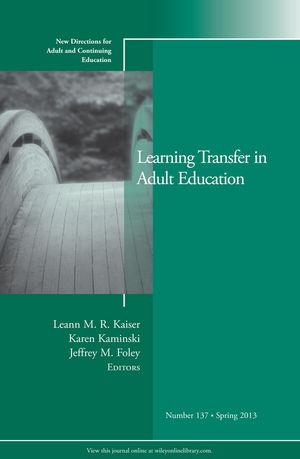
Learning Transfer in Adult Education (New Directions for Adult and Continuing Education, Number 137)
Leann M. R. Kaiser, Karen Kaminski, and Jeffrey M. Foley’s edited volume Learning Transfer in Adult Education offers a concise and readable entry point into the topic of learning transfer. While the stated focus of the volume is adult education, many of the themes and strategies considered will be of interest to those teaching traditional undergraduates as well. According to the editors, “Learning transfer, simply stated, is the ability of a learner to apply skills and knowledge learned in one situation or setting to another” (1). This goal, they suggest, is fundamental to any educational enterprise. In the first chapter, Foley and Kaiser introduce learning transfer and concepts associated with it, providing a useful framing for the chapters that follow. In particular, Foley and Kaiser explain the distinction between “near transfer,” in which the new situation closely resembles the original learning context, and “far transfer,” in which it does not. These and a handful of other key terms reappear throughout the essays; this chapter deserves a careful reading. The chapter also offers a brief overview of some tools available to instructors, many of which reappear or are discussed in greater detail in later chapters. Chapters 2 through 7 offer a variety of perspectives. Nate Furman and Jim Sibthorp (chapter 2) consider experiential learning techniques. These include problem-based learning, project-based learning, cooperative learning, service learning, and reflective learning. Three strong case studies are offered in this chapter, which help demonstrate the techniques in action. One of the techniques, problem-based learning (PBL), is the focus of the contribution by Woei Hung (chapter 3). Hung introduces the distinction between “well-structured” and “ill-structured” problems; the latter are more commonly found in the workplace and thus are productively used in PBL. Hung also comments on the cognitive processes that underlie effective learning transfer; these are complemented nicely by Jacqueline McGinty, Jean Radin, and Karen Kaminski’s study of “Brain-Friendly Teaching” (chapter 5). As the phrase “brain-friendly” suggests, the chapter skews toward pop psychology, but many of the techniques seem to hold potential. Patricia L. Hardré’s contribution (chapter 4), meanwhile, offers a serious engagement with the question of authenticity as it plays out in technology design. The remaining two case studies take up broader concerns. Rosemary Closson (chapter 6) offers a nuanced review of issues surrounding race and cultural difference in learning transfer, combining theoretical and practical discussion. This chapter is especially valuable for instructors interested in race, cultural difference, and pedagogy. Jeani C. Young (chapter 7) offers an equally sensitive treatment of personal change. The volume concludes with a discussion by the editors on “applying transfer in practice.” While those teaching adult learners will especially benefit from the specific examples and case studies, all interested readers stand to profit from this volume. In particular, its wealth of practical examples and classroom strategies offer quick and immediate value to the busy reader.
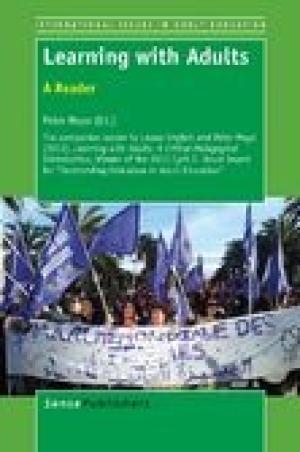
Learning with Adults begins with the following assumption: adult learning is central to the flourishing of a democracy, a democratic world, and practices of justice and peace. The volume borrows the foundations of Paulo Freire, Jürgen Habermas, John Dewey, Theodor Adorno, Jack Mezirow, and other critical theorists and democratically-minded educators and philosophers to develop a substantial discourse around adult learning. This volume is a companion to the original, Learning with Adults: A Critical Pedagogical Introduction (2012, Sense Publications) and is volume 13 in a series committed to the expanding field of adult learning centered in emancipatory, democratic, and critical studies. This second volume developed as a multi-authored extension of the initial volume. The authors of the initial volume understood that more work needed to be completed around adult learning as it relates to sexual orientation, disability, literacy, and consumer rights. The authors extended this initial plan to include chapters on relating adult education to poverty, libraries as learning sites, social creation, aesthetics, and media. Unlike traditional reader-companion volumes, this reader does not provide the foundational texts for the initial volume but provides amplifying essays brought together by contemporary authorities in adult learning and outside scholars, including Zygmunt Bauman. This is an interesting collection as it lays out essays toward an emancipatory vision for adult learning and away from the consumerist or compliance categories of training and education. The volume has five parts, beginning with the learning society and moving through questions of identity, instruments of practice, and learning in everyday life. The final section is on policy and context, which connects to an important literature on citizenship education for adult learners. The volume makes a contribution to the definition and scope of adult learning. In sum, adult learning, throughout the volume, is best understood from Oscar Negt. In his essay, “Adult Education and European identity,” he says adult learning is “learning processes that are determined by people’s own interests and horizons of perception, so that general relationships are made comprehensible” (126). The assumption throughout the volume is that adult learning is dynamic and that the methods, processes, and outcomes constantly shift as people’s own interests and horizons of perceptions shift. D.W. Livingstone outlines how adult learning that is emancipatory extends the scope of education and reverses the trend that “we may becoming increasingly willfully ignorant societies rather than learning ones” (33). Each of the chapters offers models for adult learning, some better than others, to increase critical thinking and to challenge societal norms. Several of the essays highlight the social inequality evident in access to formal education and claim that social and economic class status continue to be roadblocks in granting access to transformational learning. Adult learning, for these authors, is an invitational practice for all people and is, in itself, emancipatory. The authors continually highlight how the history of education (à la Meyers [1960] and Smith [1955]) is in need of ongoing critique if education, specifically adult education, is going to move beyond compliance and consumerist practices. These essays press against dominant ideologies, namely that “the dominant tendency in contemporary thought has been to equate learning with the provision of learning opportunities in settings organized by institutional authorities and led by teachers approved by these authorities” (37). Adult education has rarely moved beyond this dominant trend and has mostly accentuated it, which limits transformative learning for marginalized adult communities. The essays engage in a clear critique while also offering models for emancipatory and transformational adult learning processes (see Livingston’s and Cranton’s chapters). These models are the take away gifts from the volume. The models fall into three categories. The first set of models are site-based learning models, where the locations of everyday life are taken up as locations for learning. The second set of models arise from within the institutionalized practices of societies, where social and economic practices invite critical questions and transformative learning opportunities; and the third model is rooted in the ideologies of good education, namely processes to enact justice and peace. Overall, the volume holds education for adults as a learning paradigm for its own consideration. The site-based learning discussion recognizes that learning spaces are most often beyond the classroom and are found in the student’s everyday experiences. However, adult education that occurs in a classroom then becomes, itself, a site of the everyday experience. Additionally, this volume is a model for how the liberal arts tradition is a common practice in adult learning, whereby multiple disciplines make intersections around a common question. There is broad range of voices from education, philosophy, economics, sociology, and elsewhere included, yet all are committed to common questions of lifelong adult learning. Finally, the volume in itself is an adult learning model; the renaissance feel to the book results in unexpected points of informational learning for the reader. For example, on the topic of capitalism’s impact on the labor force and access to education, D.W. Lingston highlights that in 1983 only 28 percent of workers needed a college degree; by 2004 this figure rose to 45 percent. What is important is that over this same time period, degree attainment increased from 22 percent (of the population) to 54 percent, which is an increase of 34 percent (46). The data assists the reader in understanding how formalized processes of education result in trends toward underemployment. The point of information locates the implications of economics on the practice and process of adult learning. The volume, however, falls short of expectations. I was expecting the inclusion of several foundational texts in relationship to the field of adult learning. Also, several of the essays trail away from the central argument around learning with adults into diatribes on the respective intellectual agendas of each author; this is both a gift and burden. Each of the diatribes is not unimportant yet limits the volume’s coherence toward detailing models and processes for adult education amidst diverse populations. The positive aspect of this is mentioned above. I recommend this volume to curious readers. Learning with Adults assists its readers in understanding the complexities of learning with adults and makes clear that the field of adult learning is underdeveloped and misunderstood when connected to the traditional avenues of education. If a reader is looking for a more basic and invitational text on the topic of adult learning, I recommend purchasing the first volume in this series (English and Mayo, Learning With Adults: A Critical Pedagogical Introduction, 2012).
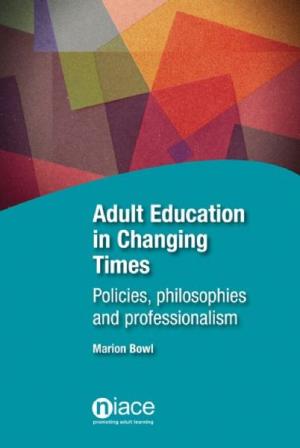
Marion Bowl’s Adult Education in Changing Times: Policies, Philosophies, and Professionalism explores the impact of changes in global policy on the field of adult continuing education. She teaches as a Senior Lecturer in the School of Education at the University of Birmingham in the UK. This title is Bowl’s most recent in a long line of publications on adult and continuing education. Bowl states “this book explores how adult educators – their work, their expectations, and the expectations laid upon them – are being affected by the changing political and economic environment” (5). She asks “why, when lifelong learning has been a policy priority for the past 40 years, does publicly funded adult education appear to be fighting for its life? And why do so many qualified, skilled, and experienced adult educators find themselves in an educational landscape that does not recognize or value their contribution?” (1). She begins by tracing the development of neoliberalism and its impact upon adult education specifically in England and New Zealand, examining the scope and definition of adult education and exploring adult educators’ beliefs and values. She then divides the rest of the volume into two sections: “Historical and Political Contexts for Adult Education” and “Adult Educators’ Working Lives Researched.” The first section presents a brief historical overview of adult education, including the impact of the Protestant Reformation, the Enlightenment, colonial expansion, urbanization and industrialization, post-World War II institutions, and globalization. The author pays particular attention to institutions, including UNESCO, OECD, the World Bank, and the European Union. She ends her historical survey by examining the role of professionalism and professionalization in the development of adult education. In the second section, Bowl explores policy and practice using her interviews with sixty-two educators in the field of adult education, evenly split between England and New Zealand. Interviewees were invited to discuss their career histories, their values and philosophies, how the field has changed over their careers, and perceived challenges and opportunities (76). She brings their narratives together to fashion a picture of adult educators’ working lives. Her findings on these educators’ attitudes toward theory, particularly the approaches of Paulo Freire and Carl Rogers, provide some interesting conclusions. In addition, her discussion of the factors impacting career identity are very insightful. Bowl ends her book by offering lessons for changing times (153). This is arguably the strongest chapter of her book and deserves to be expanded. She argues that the shifts in adult education – the growing emphasis on economic ends, marketization, the view that adult education is an individual responsibility, and tighter monitoring of educator standards – have deeply impacted the field. She advocates for a stronger linking of political engagement with pedagogical approaches; argues against hegemony in education, including preordained outcomes; supports more scrutiny of the use of power; and argues in favor of a stronger exercise of agency by educators. Finally, she notes that educators must be more willing to engage theory and politics for a “re-birth of radical education” (166). This book is well written and contains an excellent bibliography which provides a road map to these areas of the professional literature. The historical overview, however, is very limited. For example, the Protestant Reformation receives only one paragraph, and the book’s scope covers only England and New Zealand. Despite these limitations, Bowl’s scholarship provides a great starting point for explorations into these subjects in other contexts. Even though Bowl does not address theological education, adult education remains an important topic for theological education. Theological continuing education needs more discussion about its theoretical foundations and approaches, and Bowl provides a good starting point. Adult Education in Changing Times would make a good addition to progressive theological libraries with strong educational programming and terminal degrees with tracks in religious education.